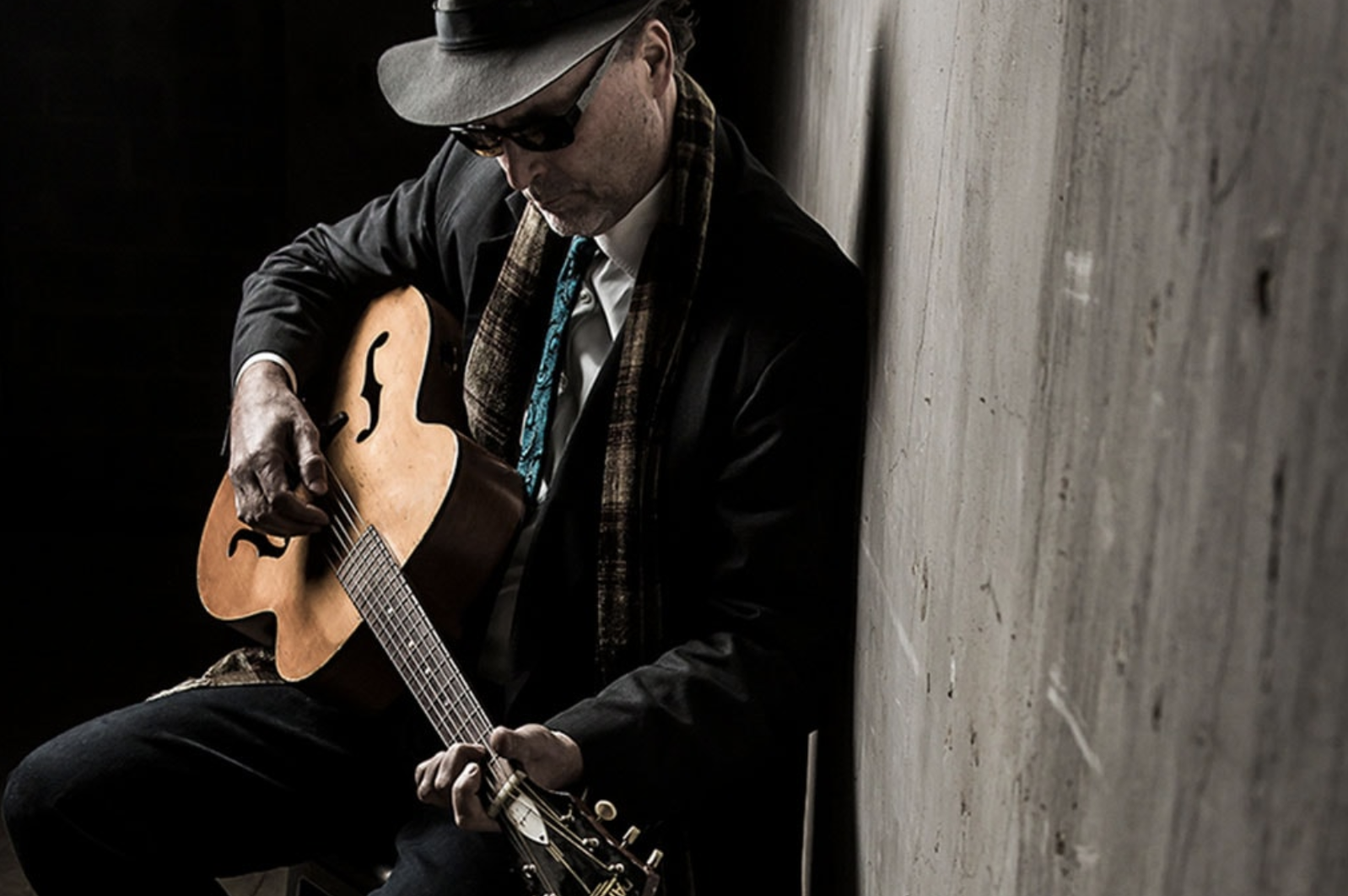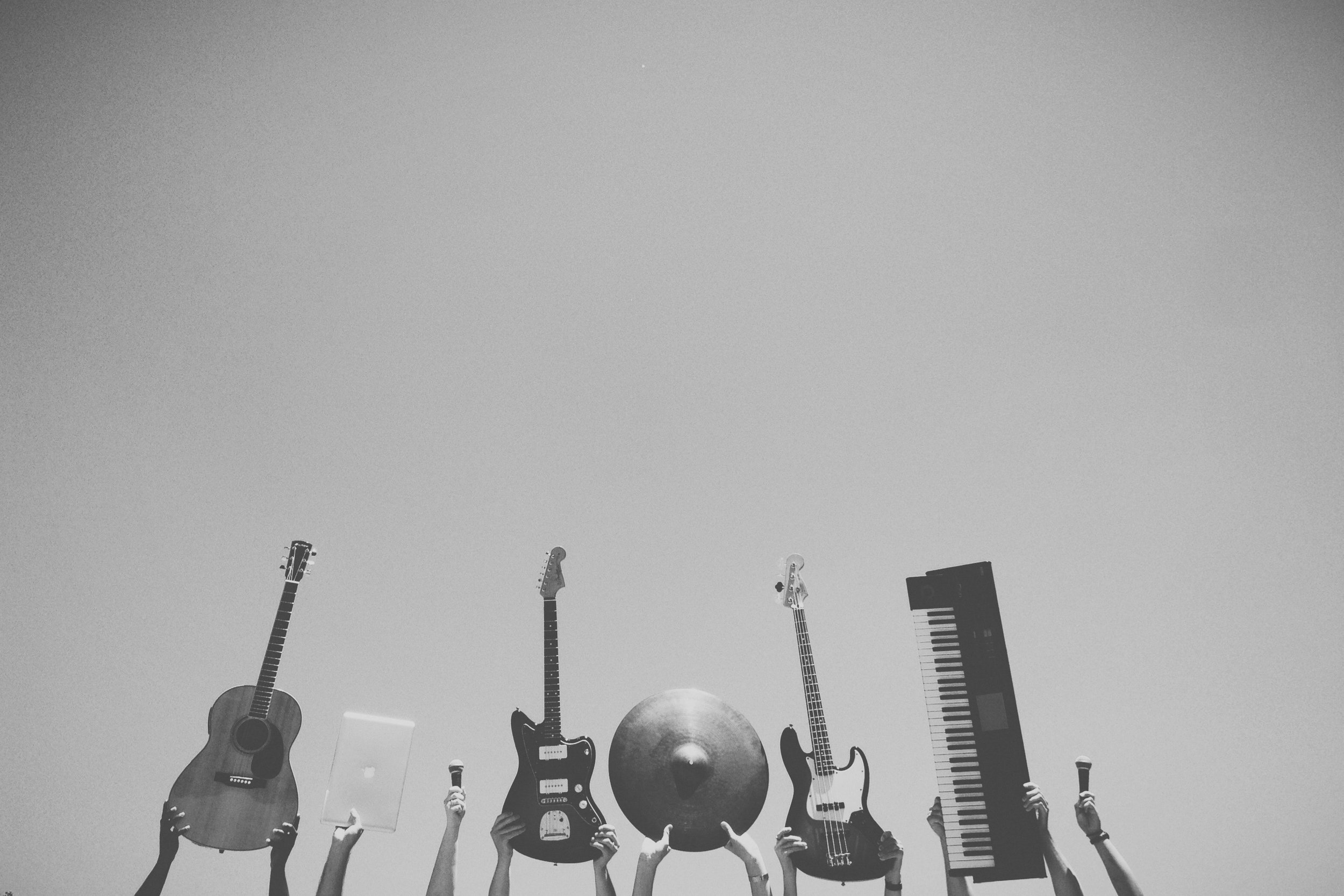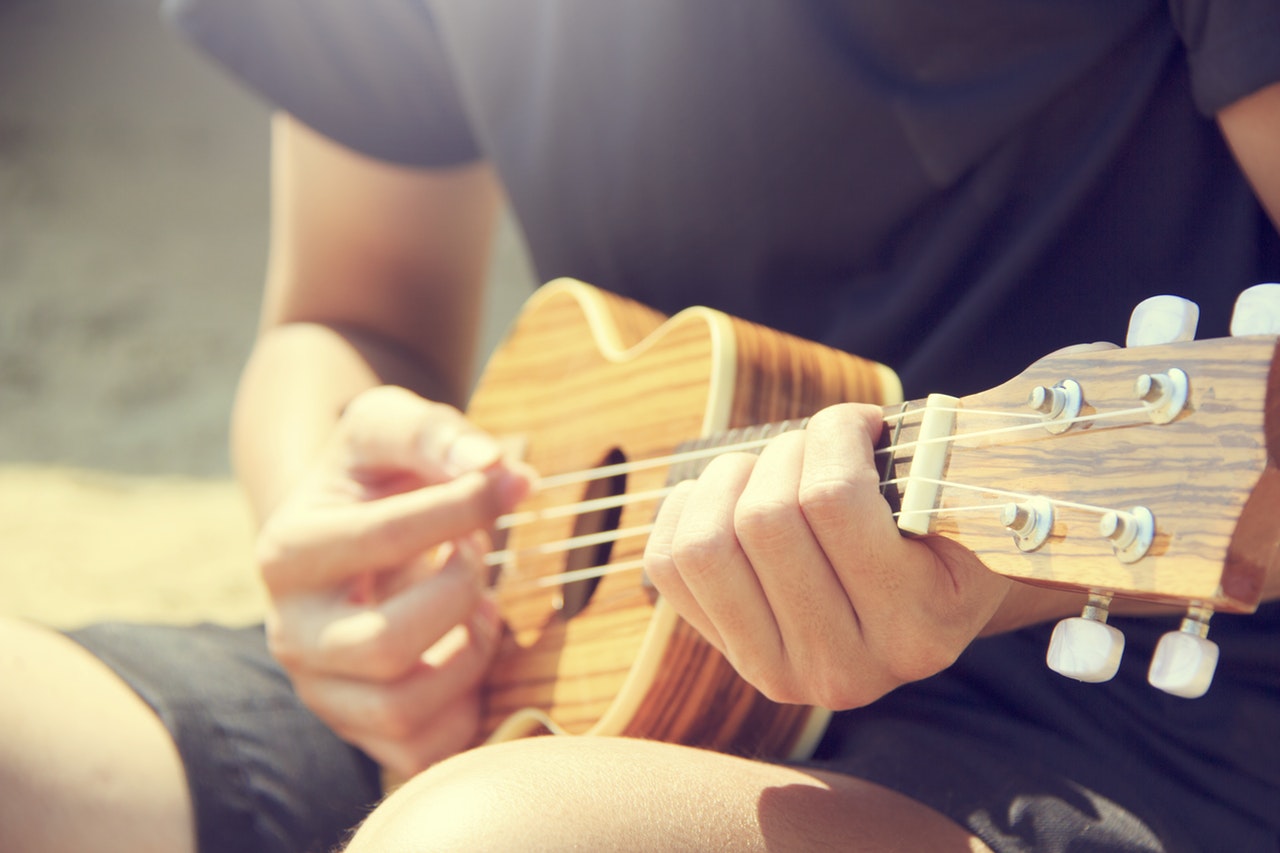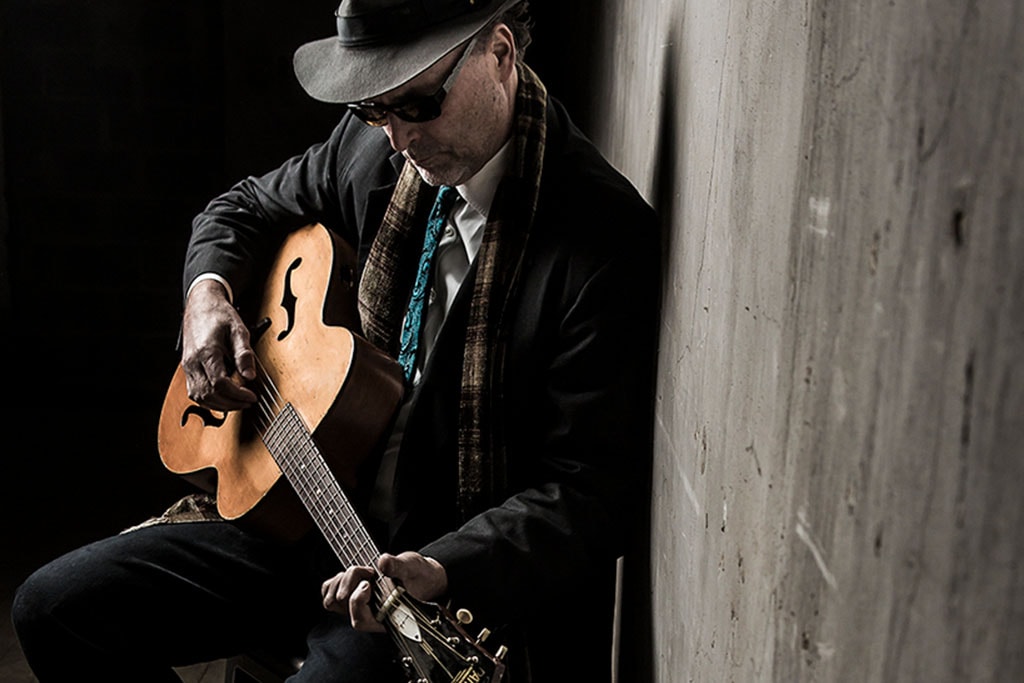A Stage Name? Why Not Dance A Bit More?
I gently kicked the vintage, boxy suitcase that was on the floor between me and a group of 15 second graders. The suitcase literally vibrated with all types of rattling, clanging and ringing sounds.
“You want to see what’s in there?”, I asked.
They erupted, “Yes!”
I opened the suitcase to reveal more than 20 percussion instruments of various sizes, makes, functions and models. In a frenzy, they began to reach for them.
“Woah! Wait a second”, I instructed. “If you want to play one of those, you have to do something first.”
“What?”, they asked in unison.
“You need to think up a stage name. This is a music class and one of the best things about playing music is that you can make up a new name for yourself. You can have your regular name and you can have your music name. I have one”, I revealed. “My real name is John. But when I play music, I’m Willie Marble. It’s cool to have a stage name. It’s lots of fun.”
One of the best things about teaching second graders is that they believe just about anything you tell them. And they are game to try just about anything.
Some may consider it a bit silly or foolish for a 60 year-old man to have a make believe name and persona. But there is a long history of musicians with stage names. Muddy Waters’ real name was McKinley Morganfield. Howlin’ Wolf’s was Chester Burnett. And that’s simply a start. Jay Z’s real name is Shawn Carter, Stephanie Germanotta is Lady Gaga and Dana Owens’s stage name is Queen Latifah.
Not to be outdone, the names these kids came up with were priceless: Lion Slayer, Crazy Bone, Lightning Bolt, Jeffrey McMoe, Funky Nose, Princess Cotton Candy, Howlin’ Hound Dog and Ruby Jewels to name only a few. And stage names are for adults as well. The three background singers in my current band each has a stage name, Queen Victoria, Honey Bee and Jackie Thunder. Together they comprise the “World Famous Marblettes”.
Having a second name and identity allows a certain amount of freedom to step outside yourself. For performers, that can be an advantage. One of the most important characteristics of music and art is that it allows for the individual to “color outside the lines” without being unduly penalized or chastised. It allows you the extra space to stretch your imagination, vision and sense of self. A stage name and alternative persona allows you to be a bit silly, act a bit foolish and stretch and test the boundaries of creativity. That’s one of the reasons why music is the most effective tool in our educational arsenal to teach out-of-the-box, creative thinking.
And while that is all great and valuable, the fact is, it’s also just plain fun. And if you can’t have fun playing music, what’s the point? As Margaret Renkl recently wrote in the NY Times, “A person who is not afraid of looking like a fool gets to do a lot more dancing.”
Having a stage name and alternative identity can be lots of fun. Although, as a general rule, if you begin to assume four or five alter egos or identities, you might want to seek some professional help.
But one or two? Why not take the opportunity to dance a bit more?
Music and the Arts: A Privilege For a Lifetime
Something that truly bothers me is when someone believes they have no musical talent or that they used to play as a youngster but gave it up. This is sad because everyone can play music. After all, everyone has music pounding away inside of them in the form of a rhythmically beating heart. That is a solid start and a firm foundation upon which to build. It’s a great reason for people who have never played an instrument, or who, played as a youngster but stopped, to start or restart, playing.
“Why not?” I suggest. “Fifteen minutes a day and before you know it, you find yourself improving.”
It also bothers me when people say they are too old to begin to learn to play music.
“What do you mean, too old? You can play music until your last day on this earth. So why not?” You will be able to enjoy it for a long time.”
It’s also absolutely irrelevant how you “stack up” against other musicians. At the end of the day, the only thing that matters is whether you enjoy it.
I’ve always wanted to draw and paint but never made a real effort to learn how. So heeding my own advice, I began taking drawing and painting lessons.
It has been wonderful! Not only has it been loads of fun, but I have learned so much about the creative arts and lifelong learning. I also find myself looking at everything, from flowers, to food, to landscapes and faces, differently – considering colors, composition and perspective and wondering how to go about painting them.
Taking up painting has also reaffirmed that, like music, where you can interpret songs any way you please, in art, it’s okay to “color outside the lines”. That is the greatest lesson of the arts: that you can color outside the lines without penalty. It’s a safe place to test boundaries and explore the unconventional. The fact is, creativity can be taught and learned. But first, it has to be encouraged. The arts are a potent vehicle to encourage such creative, bold and fearless thinking. Mistakes can be embraced, modified and turned into something positive. For example, as a stream of paint slithered down my canvas, where I saw a “mistake”, my instructor saw an “opportunity”. “Don’t worry about it”, she said, “Embrace it, own it, work off it and use it to your advantage.”
It’s also confirmed my belief that it doesn’t matter what anyone else thinks of your art as long as you derive pleasure from it. That requires the boldness and courage to put yourself “out there”. I agreed to be a part of an “emerging artists” exhibit, where my work will be shown in a public gallery. This prompted a friend to ask, “How can you do that? You’ve only been painting for a few months?”
But why not? Who’s to judge whether your art or music is any better or worse than anyone else’s? As long as you enjoy the process, what does it matter?
But the greatest lesson I have learned and come to appreciate is that, like music, painting or drawing or being involved in other creative arts such as theater, is that these are things that you can do for the rest of your life.
The creative arts provide the opportunity and indeed, privilege, of being able to participate, learn from and enjoy it forever. You never have to “retire” from the arts. Unlike other activities, such as sports or sometimes, your career, the decision to “retire” is often not left to you.
I love the game of basketball and after my competitive career ended continued to play pick up games until age fifty. It was a very sad day to arrive at the inevitable conclusion that my body would simply no longer allow me to continue to play. “Retirement” from the creative arts is optional. You can do it whenever you want and on your own terms.
And, like a fine wine, you get better at the creative arts the older and more experience you get. Experience builds confidence and courage to continue to challenge yourself to create and put yourself “out there”. It keeps you vibrant and engaged.
One of the most fundamental responsibilities of our schools and education system is to instill in students a love of, curiosity for and mindset to embrace lifelong learning. That is why it is so important that our schools and communities invest in music and the arts. But it’s just as important to provide exposure to activities that can be practiced for a lifetime. And the institution through which we as a society can provide such opportunities and privilege is through our educational system
Being exposed to and participating in the arts is vitally important as a vehicle to teach creativity, build confidence and instill characteristics such as discipline and personal responsibility. And as such, everyone can and should enjoy that opportunity and privilege…for a lifetime.
Music’s Next Frontier: Healing
One of the fundamental responsibilities of an executive director of a music related non-profit (MusicForEveryone.net) is advocacy regarding the value and impact of music in our schools and communities. As I was a novice in this regard when Music For Everyone was founded in 2006, my learning curve has been steep. And the learning continues to this day.
As a lifelong musician, I certainly experienced and understand the impact of music had on my life. Playing music brings tremendous joy to my life and feds my soul. As Plato wrote, “Music gives a soul to the universe, wings to the mind, flight to the imagination and life to everything.” Music’s value in this regard is very powerful and it rests at the core of the justification of investment in the arts “for arts sake”.
Being that MFE was created to raise money to provide instruments and support to school music programs, it became clear fairly quickly that simply using this “arts for arts sake” as a central narrative to convince people to open their hearts, minds and wallets to MFE’s cause was simply not enough. While musicians “get it”, it is hard to explain to people who don’t. Thus, a wider and more thorough narrative was necessary. That being the case, I immersed myself in the research regarding music’s educational and character development benefits. That was low hanging fruit as there is an enormous amount of evidence of music’s positive impact in these areas. From improved academic skills, test scores and student “engagement” in school to teaching lessons in teamwork, discipline, communication skills and personal responsibility, it’s benefits are very clear. Music is math, music is reading, music is logic, music is language and music requires discipline. And driving all of that is its potential to teach and nurture creativity.
The more I researched and witnessed those impacts through MFE, it became apparent there were other benefits. The most obvious was music’s power and potential to create and build community. Music is the universal language and thus, it’s potential to serve as a bridge of understanding to build community and connections between cultures, races and generations is unparalleled. Music’s power in this regard was made clear to me when MFE created a program that places between 12 and 20 fully designed and painted pianos throughout the streets of Lancaster with 24/7 access for the public for four months in the summer. “Keys for the City”, which will celebrate its tenth year in Summer 2019, has provided a platform for literally tens of thousands of magical musical moments around those pianos where people of all ages, races, backgrounds and beliefs come together to share and experience the community building power of music. Keys is now an important part of the fabric of the Lancaster community and a source of great community pride.
But Keys also opened my eyes to another important benefit and impact of music – economic development. This aspect of music’s benefit as a community investment was not something I had given much, if any, consideration to until we witnessed the community impact of Keys. For the past two decades, Lancaster City has had as a major component of its economic development plan, a commitment to the arts. And the city has been wildly successful in leveraging the arts to build a vibrant, thriving and dynamic economy, making it a “hot” arts community and tourist destination. Keys for the City has contributed to this community-wide success.
But music is the gift that keeps on giving when it comes to developing narratives about its positive impact. While I was beginning to feel comfortable and competent in my ability to articulate a broad, cogent narrative regarding the value and impact of music in our schools and communities, I was missing what is fast becoming the next frontier in music’s ability to positively impact our populace and society.
Specifically, it is becoming increasingly clear that the next big frontier in advocating effectively for societal investment in music is in the area of music for healing. There is an increasing amount of research, writing, experimentation and application of music as a broad healing tool. In one sense, music’s potential and power to uplift and inspire as well as to calm and sooth has existed for as long as it has been played. But in another sense, it’s full power as a healing tool seems to finally be beginning to be fully embraced by a wide array of medical and health practitioners. It is being used for everything from managing pain and addiction, to treating dementia, depression, anxiety to improving motor coordination in people suffering from cerebral palsy. And scientists, researchers and medical practitioners are discovering and developing additional ways to utilize music for healing virtually every day.
Following are several quotes relating to music’s power and potential to heal.
“Music might provide an alternative entry point to the brain, because it can unlock so many different doors into an injured or ill brain. Pitch, harmony, melody, rhythm and emotion — all components of music — engage different regions of the brain. And many of those same regions are also important in speech, movement and social interaction. If a disease or trauma has disabled a brain region needed for such functions, music can sometimes get in through a back door and coax them out by another route.” Harvard University neurologist, Dr. Gottfired Schlaug.
““The power of music to integrate and cure is quite fundamental. It is the profoundest non-chemical medication.””
“Half an hour of music produces the same effect as ten milligrams of valium.” -- Dr. Raymond Bahr
And leave it to musician Bob Marley to bring it all together with one of his simple, straightforward universal truths, “One good thing about music, when it hits you, you feel no pain.”
Music for healing. It’s the next big frontier. And music advocates would be well served to begin to include this benefit, along with music’s educational, character development, community building and economic impact benefits in their advocacy efforts.
Tiny Tim: An American Musical Visionary
If you are over 50, you surely remember him. How could you not? Certainly you remember his signature song: “Tip Toe Through the Tulips”.
Yes, we’re talking about Tiny Tim, that tall, long, stringy haired, goofy looking dude playing the ukulele and singing in that quivering, falsetto voice. He was silly, campy and probably did more for ensuring that the ukulele would become one of the more derided instruments of the past half-century.
But what goes ‘round, comes ‘round because the ukulele is back! And it’s hot! Ukulele music festivals are popping up all over the country. Even Eddie Vedder recorded an entire album of ukulele songs and won a Grammy for it. Over 1.7 million ukes were sold in 2017, up from 500,000 in 2009.
Tiny Tim, as it turns out, was an American musical visionary.
The ukulele originated in Europe and was introduced to Hawaii in 1879 when a Portuguese immigrant named Joao Fernandez jumped off a boat and started singing and strumming his Branguinha. Legend has it that the Hawaiians were so impressed with his playing that they called the instrument “ukulele” which translates to “jumping flea.” The instrument quickly captured the imagination of the islands to where the reigning monarch Kalakaua learned how to play it. By the 1920’s Sears Roebuck catalogues offered ukes for a couple of dollars. Big name performers such as Bing Crosby, Betty Grable and Elvis Pressley incorporated the uke into their acts.
But by the 1950’s rock-n-roll was sweeping the country and the tinny, toy-like uke was swamped by kids who fell in love with the electric guitar.
Tiny Tim, however, kept playing it, appearing on television shows like Ed Sullivan. But the image of Tiny Tim and the toy-like ukulele was no match for the electric guitar driven act like the Beatles, Jimi Hendrix, Rolling Stones and Chuck Berry.
Beginning in the 1980’s some rock stars such as Paul McCartney began to play it. McCartney was influenced by George Harrison who was a devotee of the instrument. And slowly, the ukulele began to make a comeback, despite the fact the most common image of the instrument was still associated with Tiny Tim. For a wonderful account of the uke’s history and evolution, (and the main source of the research for this paper), check out “The Rise and Fall (and Rise) of the Ukulele” by Marion Jacobson in January 24, 2015 edition of The Atlantic.
Clearly, there is a major ukulele uprising taking place in the US, not only as evidenced by the exploding sales numbers, but I have been exposed to the rise (again) of the uke through my work with Music For Everyone. Other than my memories of Tiny Tim, I had no idea of the resurgence of the uke until a few years ago when we began receiving requests from schools to provide them with the instruments to start school based uke programs. MFE, through its annual instrument grant program, has been awarding grants to schools in Lancaster County, PA since 2007.
Over the first six years of the grant program, we did not receive one request from a school to provide them with a batch of ukes. But in 2012 we began to notice the beginning of a trend, where we would receive at least two and sometimes three requests from schools to provide them with 20 – 25 ukuleles to start a program. I have to admit that I was a bit skeptical but in conversations with teachers it became quite clear that the ukulele may very well be the introductory instrument of the future for young children. The more I found out about it and began to experiment with one myself, it became very apparent.
First, it is small for small hands. Kids have trouble with larger instruments like a full sized guitar, saxophone or viola. Many instruments are simply too big and bulky for young children. Second is that you can begin playing songs on a uke almost immediately as there are only four strings and you can form and play many chords by playing (fingering) only one string. The faster you can get children to feel that they are producing real music not only by themselves, but to be able to play music with other players, the better. The more excited they will get about playing music. The uke is excellent for achieve that goal.
Don’t believe me? Think back to those recorders or the screeching sounds that a beginner saxophonist or violinist produce when learning the instrument. Immediate, positive gratification and connection to the instrument, the music and fellow players is key in sparking a child’s interest in continuing to play music. This is why teachers love them as an introductory instrument.
And they are inexpensive. While you can spend over $500 for a high-end model a decent uke for beginners costs around $100. Other than a choral group or a percussion ensemble, the cost of providing 20 – 25 instruments to start a full string program or brass ensemble is prohibitive, particularly in these days of tightening budgets for music and art programs.
And not only are we receiving requests from schools for ukes, we are also beginning to receive them from community recreation programs and senior centers to start groups for senior. To get a sense of their potential impact on seniors, check out this recently released Music For Everyone video:
The segment on our Ukulele Uprising begins at the 1.50 mark.
Finally, there is the sheer fun of it as Jake Shimabukuro explains, “There’s something about the ukulele that just makes you smile. It makes you let your guard down. It brings out the child in all of us.”
And in these times, we can all benefit from embracing our inner child.
So, long live the uke! The instrument of the future. And, as we all tip toe through the tulips, we should pay our respects to Tiny Tim, an American Musical Visionary.
A Stage Name? Why Not Dance a Bit More?
I gently kicked the vintage, boxy suitcase that was on the floor between me and a group of 15 second graders. The suitcase literally vibrated with all types of rattling, clanging and ringing sounds.
“You want to see what’s in there?”, I asked.
They erupted, “Yes!”
I opened the suitcase to reveal more than 20 percussion instruments of various sizes, makes, functions and models. In a frenzy, they began to reach for them.
“Woah! Wait a second”, I instructed. “If you want to play one of those, you have to do something first.”
“What?”, they asked in unison.
“You need to think up a stage name. This is a music class and one of the best things about playing music is that you can make up a new name for yourself. You can have your regular name and you can have your music name. I have one”, I revealed. “My real name is John. But when I play music, I’m Willie Marble. It’s cool to have a stage name. It’s lots of fun.”
One of the best things about teaching second graders is that they believe just about anything you tell them. And they are game to try just about anything.
Some may consider it a bit silly or foolish for a 60 year-old man to have a make believe name and persona. But there is a long history of musicians with stage names. Muddy Waters’ real name was McKinley Morganfield. Howlin’ Wolf’s was Chester Burnett. And that’s simply a start. Jay Z’s real name is Shawn Carter, Stephanie Germanotta is Lady Gaga and Dana Owens’s stage name is Queen Latifah.
Not to be outdone, the names these kids came up with were priceless: Lion Slayer, Crazy Bone, Lightning Bolt, Jeffrey McMoe, Funky Nose, Princess Cotton Candy, Howlin’ Hound Dog and Ruby Jewels to name only a few. And stage names are for adults as well. The three background singers in my current band each has a stage name, Queen Victoria, Honey Bee and Jackie Thunder. Together they comprise the “World Famous Marblettes”.
Having a second name and identity allows a certain amount of freedom to step outside yourself. For performers, that can be an advantage. One of the most important characteristics of music and art is that it allows for the individual to “color outside the lines” without being unduly penalized or chastised. It allows you the extra space to stretch your imagination, vision and sense of self. A stage name and alternative persona allows you to be a bit silly, act a bit foolish and stretch and test the boundaries of creativity. That’s one of the reasons why music is the most effective tool in our educational arsenal to teach out-of-the-box, creative thinking.
And while that is all great and valuable, the fact is, it’s also just plain fun. And if you can’t have fun playing music, what’s the point? As Margaret Renkl recently wrote in the NY Times, “A person who is not afraid of looking like a fool gets to do a lot more dancing”.
Having a stage name and alternative identity can be lots of fun. Although, as a general rule, if you begin to assume four or five alter egos or identities, you might want to seek some professional help.
But one or two? Why not take the opportunity to dance a bit more?








